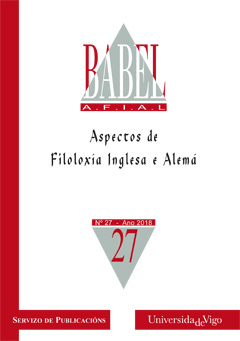Las sombras de lo bello en "Christabel", "Lamia", "La Belle Dame sans Merci" y "On the Medusa".
Resumen
During thc 18th century aesthetics became fashionable due to Burke's influential work Philosophical Enquity: the beautiful and the sublime arose as two aesthetic categories that were to fascinate Romantic poets. However, as systematised hy Burkcan theory-among many others- both beauty and sublimity were perceived as closed systems, which, furthermore, have been considered as gender based once by most recent feminist criticism. Neverthelcss, categories proved to be permeable since thcy favoured the birth of powerful female characters that defied Burkean hermetic categorisation. Thus, my airn throughout this article is to explore how the beautiful may cast its own shadows and how, in doing so, a linkage with the sublime (male dominated aesthetic) is supported. The following poems, namely, '·Christabel", ''Lamia", "La Be lle Dame Sans Merci" and "On the Medusa", will constitute the keystone of this essay, since they epitomise aesthetic ambiguity. In that way, I will centre on the implicit duality in heauty, which, the same as women, is not necessarily docile, but powerfully obscure. The beautiful is not a guarantee of good and virtue any more, but its pulchritude may be shadowy treacherous.



